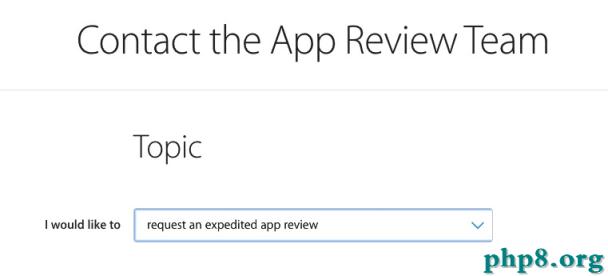在SDK中打開其他接入應用的解決方案
一直以來,在iOS的開發中,在程序中打開另外一個應用是不允許。後來有正義之士用class-dump在私有API中找到了這樣的功能。那就是使用UIApplication的launchApplicationWithIdentifier:suspended:來打開。
使用的辦法如下:
NSString *identifier = [[NSBundle mainBundle] objectForInfoDictionaryKey:@"CFBundleIdentifier"];
[[UIApplication sharedApplication] launchApplicationWithIdentifier:identifier suspended:NO];
畢竟是私有API不是一個好的辦法,至少你永遠都得不到App Store的認可。
在某些時候是其實我們可能還是需要這樣的功能。作為一個SDK,其實還是有一種比較好的解決方案的。那就是使用UIApplication的openURL:的方法。
我們先來了解一下openURL和實現的方案。OpenURL其實是有很豐富的功能,除了簡單的調用safari打開網站,還可有google地圖搜索,Mail,撥打電話,發送短信,打開AppStore。
-(IBAction)openMaps {//打開地圖
// Where is Apple on the map anyway?
NSString* addressText = @”1 Infinite Loop, Cupertino, CA 95014″;
// URL encode the spaces
addressText = [addressText stringByAddingPercentEscapesUsingEncoding: NSASCIIStringEncoding];
NSString* urlText = [NSString stringWithFormat:@"http://maps.google.com/maps?q=%@", addressText];
// lets throw this text on the log so we can view the url in the event we have an issue
NSLog(urlText);
[[UIApplication sharedApplication] openURL:[NSURL URLWithString:urlText]];
}
-(IBAction)openEmail {//打開mail
// Fire off an email to apple support
[[UIApplication sharedApplication] openURL:[NSURL URLWithString:@"mailto://
[email protected]"]];
}
-(IBAction)openPhone {//撥打電話
// Call Google 411
[[UIApplication sharedApplication] openURL:[NSURL URLWithString:@"tel://8004664411"]];
}
-(IBAction)openSms {//打開短信
// Text to Google SMS
[[UIApplication sharedApplication] openURL:[NSURL URLWithString:@"sms://466453"]];
}
-(IBAction)openBrowser {//打開浏覽器
// Lanuch any iPhone developers fav site
[[UIApplication sharedApplication] openURL:[NSURL URLWithString:@"http://itunesconnect.apple.com"]];
}
那怎樣來制作從一個應用打開其他應用,這其實很簡單,打開info.plist,添加一項URL types,展開URL types,再展開Item1,將Item1下的URL identifier修改為URL Scheme,展開URL Scheme,將Item1的內容修改為myapp其他程序可通過myapp://訪問此自定義URL。
其實就是類似下面的樣式。
這樣就只要open這個應用的自定義url,系統就可以幫我們找到並打開這個程序。
NSURL *url = [NSURL URLWithString:@" myapp:"];
[[UIApplication sharedApplication] openURL:url];
作為SDK比普通應用的優勢在於,每一個接入的應用都有一個AppId用於區分,我們就可以充分利用這個AppId來制作。
我們可以要求第三方開發者需要在他們Info.Plist中配置這樣的字段,這樣我們就可以在我們的SDK界面中打開對應AppId的應用,當然,這需要設備中真的有安裝這個程序。
例如某應用分配AppId為111122223333,我們要求其再Info.plist定義URL Schemes為NDSDK111122223333,這樣,我們在內部代碼就可以准確識別是否有這樣的程序。
更有甚者,我們可以通過canOpenURL這個方法來判斷這台設備是否安裝了這個應用,如果可以打開,返回YES,那應該是有安裝這樣的程序,不管是ipa還是Pxl的程序,應該都是沒有問題的。
如果我們真的選擇這樣子做,那就需要在文檔中說明清楚。但是需要注意的是,也許作為程序員,可能不是很喜歡看文檔,也許你費盡心思寫的文檔他並沒有看到。這時我們應該來一點強硬的手段,於是有了下面這段代碼的功能。
1:檢查用戶是否配置了AppId
2:有沒有准確配置Info的CFBundleURLSchemes字段
3:是不是可以正確打開。
// Check App ID:
// This is really a warning for the developer, this should not
// happen in a completed app
if (!kAppId) {
UIAlertView *alertView = [[UIAlertView alloc]
initWithTitle:@"Setup Error"
message:@"Missing app ID. You cannot run the app until you provide this in the code."
delegate:self
cancelButtonTitle:@"OK"
otherButtonTitles:nil,
nil];
[alertView show];
[alertView release];
} else {
// Now check that the URL scheme fb[app_id]://authorize is in the .plist and can
// be opened, doing a simple check without local app id factored in here
NSString *url = [NSString stringWithFormat:@"fb%@://authorize",kAppId];
BOOL bSchemeInPlist = NO; // find out if the sceme is in the plist file.
NSArray* aBundleURLTypes = [[NSBundle mainBundle] objectForInfoDictionaryKey:@"CFBundleURLTypes"];
if ([aBundleURLTypes isKindOfClass:[NSArray class]] &&
([aBundleURLTypes count] > 0)) {
NSDictionary* aBundleURLTypes0 = [aBundleURLTypes objectAtIndex:0];
if ([aBundleURLTypes0 isKindOfClass:[NSDictionary class]]) {
NSArray* aBundleURLSchemes = [aBundleURLTypes0 objectForKey:@"CFBundleURLSchemes"];
if ([aBundleURLSchemes isKindOfClass:[NSArray class]] &&
([aBundleURLSchemes count] > 0)) {
NSString *scheme = [aBundleURLSchemes objectAtIndex:0];
if ([scheme isKindOfClass:[NSString class]] &&
[url hasPrefix:scheme]) {
bSchemeInPlist = YES;
}
}
}
}
// Check if the authorization callback will work
BOOL bCanOpenUrl = [[UIApplication sharedApplication] canOpenURL:[NSURL URLWithString: url]];
if (!bSchemeInPlist || !bCanOpenUrl) {www.2cto.com
UIAlertView *alertView = [[UIAlertView alloc]
initWithTitle:@"Setup Error"
message:@"Invalid or missing URL scheme. You cannot run the app until you set up a valid URL scheme in your .plist."
delegate:self
cancelButtonTitle:@"OK"
otherButtonTitles:nil,
nil];
[alertView show];
[alertView release];
}
}




